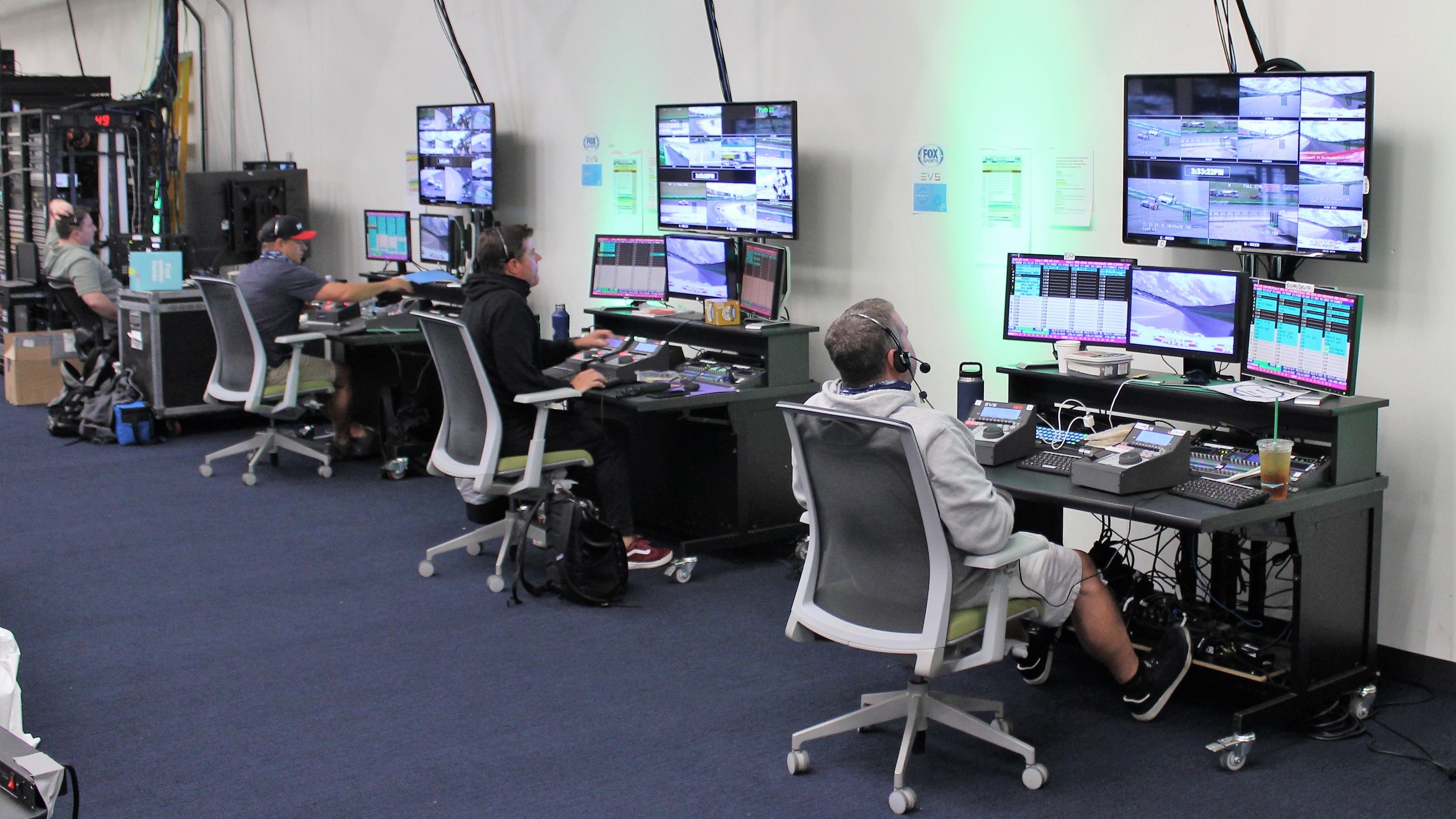Fox Sports Uses Variety of Production Strategies to Tackle Busy Schedule
To keep talent and crew safe during the pandemic required a rethinking of workflows

LOS ANGELES—Identifying the obstacles COVID-19 has created in live sports is relatively straightforward: cramped production vehicles designed for close collaboration, not social distancing, exposure while traveling to different venues every week and contact with others on site.
Overcoming those challenges has required a lot of effort—not only a rethink of workflows but also a fast implementation to stand up alternatives to on-site production in mere months, says Michael Davies, Fox Sports senior vice president, Field & Technical Operations.
“What we’re talking about is not necessarily a new idea—other networks have done similar things," says Davies. “What is new is the fact that it spun up so very quickly and so universally adopted.”
Last Saturday’s [Oct. 24] Fox Sports lineup, six college football games and Game 4 of the World Series, offers a glimpse of what Davies means. “It was pretty incredible to see how many different ways we approached each production,” he says.
While traditional on-site production was used in Arlington, Texas, for production of Game 4 of the World Series from Globe Life Field, operation of EVS replays and Stats were done remotely in Los Angeles for the Penn State-Indiana, Boise State-Utah State and Ohio State University-Nebraska college football games, as was video editing for the OSU pre-game.
Further, Fox Sports relied on its Home Run Production (HRP) remote production capabilities from “the Vault” in Los Angeles for the Air Force-San Jose State and Oklahoma State-Iowa State games and HRP from its Charlotte, N.C., facility for production of the University of Kansas-Kansas State rivalry.
“We have a finite amount of room in a production truck, which supplied some guidance for the larger shows,” he says. “It might have six EVS [stations], but at social distance maybe I can only fit three. The same thing with support and statistics.”
Get the TV Tech Newsletter
The professional video industry's #1 source for news, trends and product and tech information. Sign up below.
Freeing up space—whether in production trucks or in the announce booth—to maintain proper social distance has played a large role in directing Fox Sports as it has navigated producing sports during COVID-19, he says.
“We still want to preserve the workflow that makes our game coverage, yet we want to peel off those areas where we can and do things [at production centers] in Los Angeles [and Charlotte],” he says.
The Vault in Los Angeles—a former tape library converted for production—is a roughly 3,000-square-foot facility with 32 workstations on the first floor that can be used for a variety of tasks ranging from EVS slow-motion replay and graphics to statistics.
The second floor of the Vault is outfitted with two complete control rooms to support Home Run Production instances in which video and audio from the venue are transported back for production, he says.
“On site [for HRP games], the truck is relatively empty. There’s no TDs [technical directors], no EVS’s—sometimes one to handle the Super Motion—but it’s generally a ghost town in there,” says Davies.
It’s too much, however, to do back-to-back game productions using the same facilities for HRP, so the broadcaster alternates between the Vault and its Charlotte facility, he says.
HRP also can encompass the talent used to cover games, giving Fox Sports the option to have them on-site or in a studio equipped with the same telestrators and setup they use in the announce booth, he adds.
Davies credits Fox Sports engineering leadership, including Mike Wilken, senior vice president, Systems & Technology, and Kevin Callahan and Brad Cheney, both vice presidents, Field Operations/Engineering, with standing up these remote facilities quickly to adapt the workflow to COVID-19.
“Those are the guys who are making magic on a day-to-day basis, and came up with this architecture,” says Davies.
While marquee events like the World Series continue to be produced on-site with a more traditional workflow, having the ability to peel away some functions or even all of production control to its facilities in Charlotte and Los Angeles has played a big part in keeping crews safe during the pandemic.
“We’ve kept everybody safe, touch wood, throughout all of our productions,” says Davies.
Phil Kurz is a contributing editor to TV Tech. He has written about TV and video technology for more than 30 years and served as editor of three leading industry magazines. He earned a Bachelor of Journalism and a Master’s Degree in Journalism from the University of Missouri-Columbia School of Journalism.

